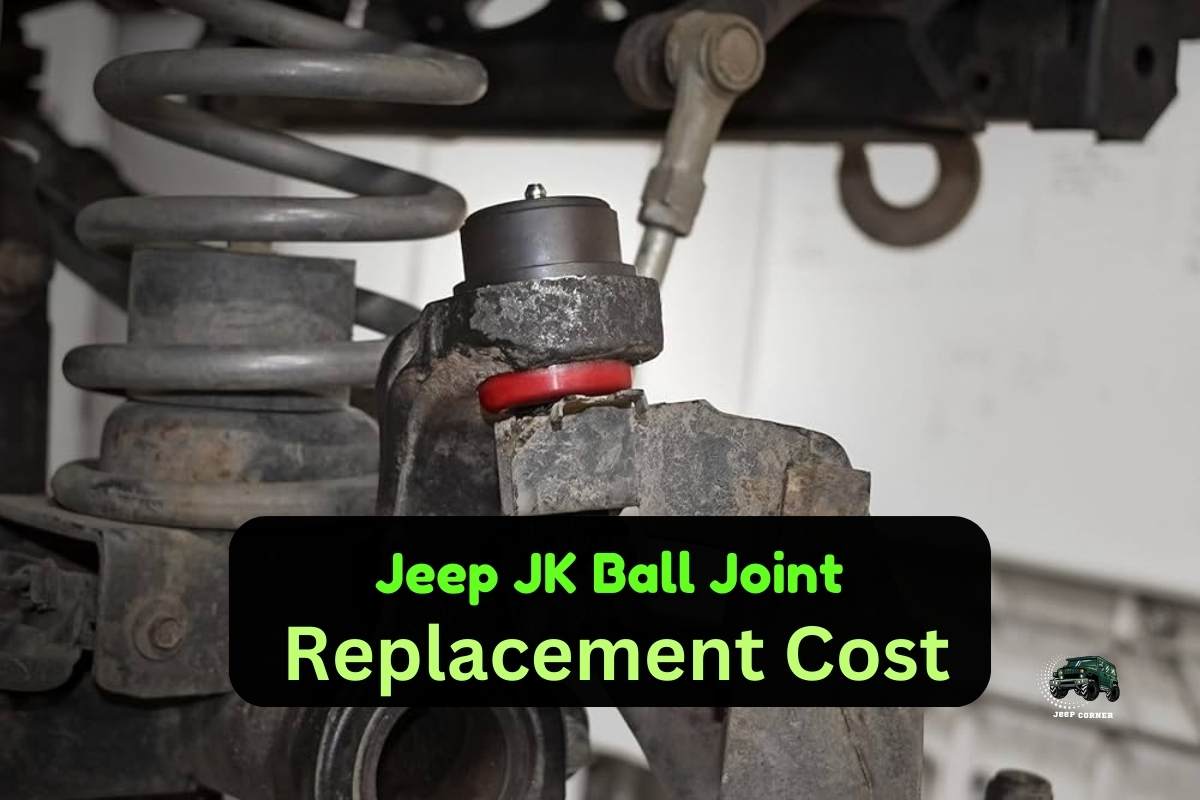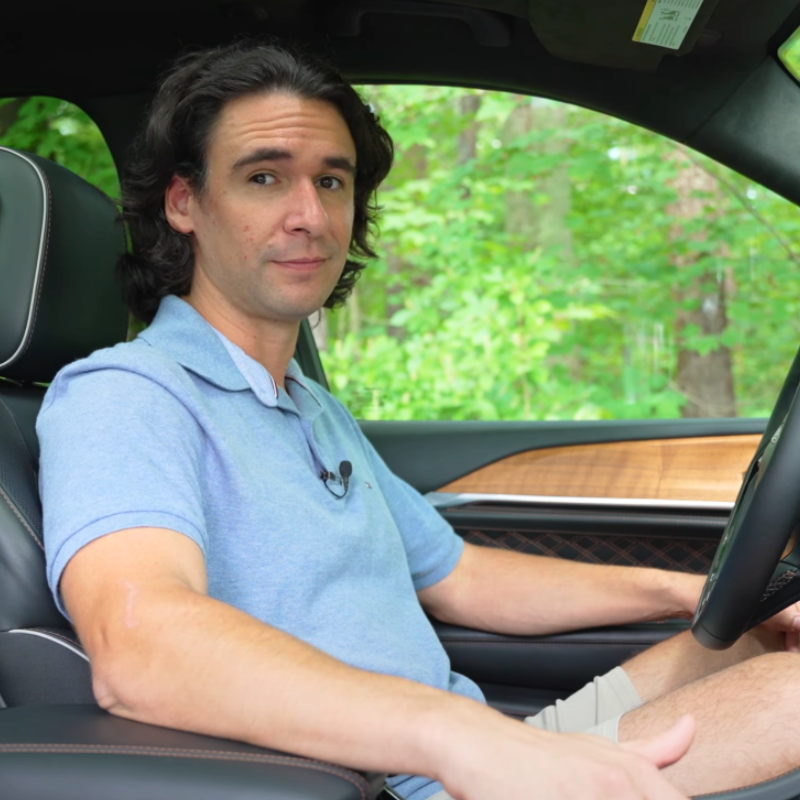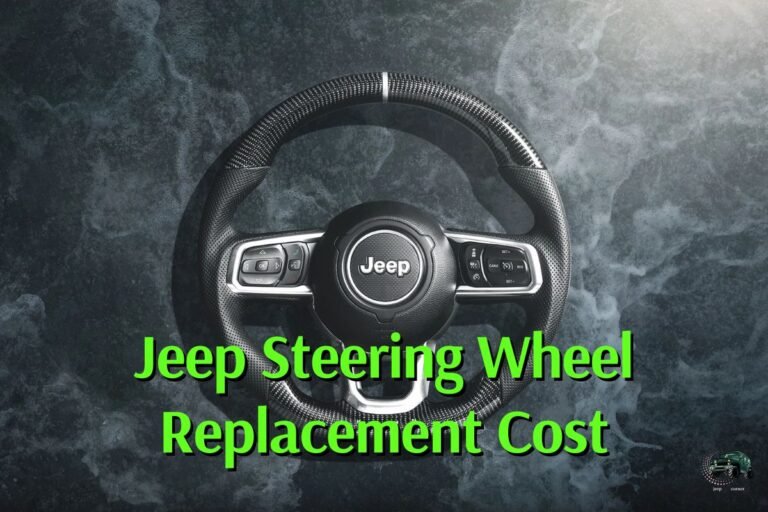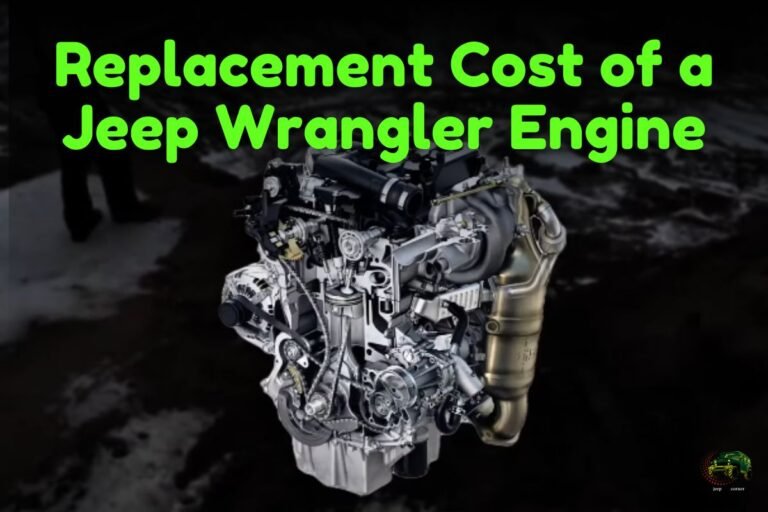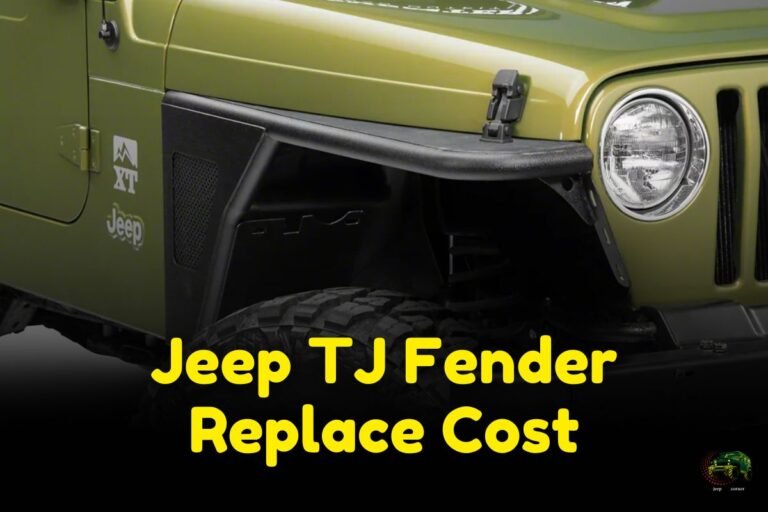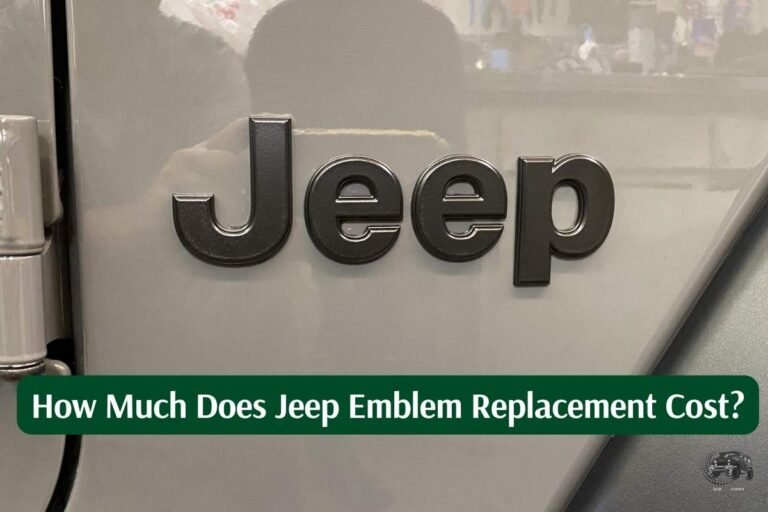Jeep JK Ball Joint Replacement Cost || Find Out The True Cost
Sometimes, the ball joints on the front axle of a Jeep JK are a source of frustration and constant repair. They always seem to give out right when you need them most; nevertheless, the front ones are the most prone to damage.
So what is the jeep jk ball joint replacement cost? The price varies widely, from $80 to $200 or more, depending on where you purchase it and what vehicle you have. Thus, the total cost of replacement might be anything from $500 to $1000, or more in extreme cases.
In this article, we have pointed out the jeep JK ballpoint replacement price. Keep reading to find out how much this replacement project is expected to cost and how it will be carried out.
How Much Does Jeep JK Ball Joint Replacement Cost?
Replacement of a Jeep JK ball joint can cost anywhere from $80 to $200, depending on several factors. Whether you need to replace both or just one side of your Jeep Wrangler‘s tires relies on the model year of your vehicle.
Accordingly, depending upon where you are and how difficult it is to reach the ball joints, the cost to repair both the upper and lower ones can range from $180 to $250 per side at most shops, all the way up to $700.00.
A ball joint itself can cost anything between $20 to $150 (or more), while labor can add another $600 to $1,000. This estimation, however, is highly sensitive to details like the ball joint’s make, material, and brand.
We’ve listed some popular Jeep JK models and their projected costs per mile driven. So you can get a feel for the range of prices and benefits:
| Model Name | Diven (Miles) | Cost |
| 2018 Jeep Wrangler 2.0L L4 | 31,000 | $225 – $275 |
| 2008 Jeep Wrangler 3.8L V6 | 110,000 | $204 – $250 |
| 2007 Jeep Wrangler 3.8L V6 | 98,000 | $509 – $623 |
| 2016 Jeep Wrangler 3.6L V6 | 45,000 | $1,072 – $1,310 |
| 2000 Jeep Wrangler 4.0L L6 | 68,000 | $367 – $449 |
| 2010 Jeep Wrangler 3.8L V6 | 137,000 | $409 – $499 |
| 2018 Jeep Wrangler 2.0L L4 | 31,000 | $225 – $275 |
| 2008 Jeep Wrangler 3.8L V6 | 110,000 | $204 – $250 |
| 2007 Jeep Wrangler 3.8L V6 | 98,000 | $509 – $623 |
| 2016 Jeep Wrangler 3.6L V6 | 45,000 | $1,072 – $1,310 |
How Do You Know If A Ball Joint Fails?
While the ball joints in today’s vehicles are designed to endure the lifetime of the vehicle, they are nevertheless susceptible to corrosion from wear and tear and failure.
This is particularly true for vehicles that spend a lot of time in continual, stop-and-go metropolitan traffic or on rough or poorly maintained roads. If that’s the case, it’s a good idea to check the ball joints every time you get new oil.
Damaged ball joints are more than just an inconvenience; they can impair your vehicle’s steering and put you and other drivers at risk. Below, we have stated some common indications when you have a bad ball joint:
Weak Controls
Even though it’s not as common as the other signs, loose steering can be a sign of failing ball joints and can be highly unsettling for the driver.
Clunking Noise
There will be an increase in friction caused by the use of a worn ball joint. That’ll make a noise, similar to a noisy bed spring, but mechanical.
As the ball joints were put to work whenever the wheels are turned or the vehicle is driven over uneven surfaces, this noise is most likely to be heard under these conditions.
In addition to the usual creaking, you may also notice a clunking sound emanating from the area around the wheels. That is a sign of worn-out ball joints.
Tire Wear
Ball joints that aren’t operating properly are one of several potential causes of premature tire wear. The alignment of your vehicle will be thrown off when the ball joints aren’t functioning properly. This will accelerate the wear and tear on your vehicle.
How to replace a Jeep JK ball joint?
Replacement of a ball joint can be challenging due to the joint’s location, age, and corrosion, making it hard to access and install. So, if you don’t know much about automobile suspension and wheels, it’s best to have an expert look at your vehicle.
Nevertheless, we have some easy steps for you to follow if you want to do it yourself.
Equipment required for the replacement task
- Ratchet
- socket with a 21mm diameter
- Socket size: 13mm (12 points)
- Tool that uses a 5mm socket or Allen wrench
- 15/16-inch-drive socket
- 7/8″ chuck
- Stopping point
- Screwdriver with a flat head
- Plier with a diagonal blade for cutting
- Mallet
- Squeezing the ball and socket
- Fractionated coconut oil
- Lard for suspension
- The Jack and Jack Stands, or Lift
It can be replaced by following these steps.
Step 1
The first thing you need to do is to take off the wheels of your vehicle. Always double-check your work by placing the brand-new and old parts edge by edge to make sure the replacement is a perfect fit. Take off the protective film covering the replacement nut and remove the shipping lid.
Step 2
When installing a new ball joint, it’s important to make sure it’s perfectly horizontal before you screw it to the knuckle.
Step 3
The adapters for the new ball joint are different from the previous one, so you’ll need to remove the old ones before you can install the new ones. A little, well-crafted adaptor slides right over the top part of the ball joint. Fasten the press in position above the upper adaptor.
Step 4
To prevent the stud & threads from being damaged, make sure the lower adapter slides over the large screw under the ball joint.
Step 5
When you’re satisfied that everything is aligned properly, compress the press by hand. The joint must be pressed into the knuckle so that it is centered and aligned, and the pressure is applied in a level and square fashion. When tightening, jiggle the bolts to make sure they stay in place.
Step 6
As soon as you’ve verified that there is adequate clearance and everything is secure, use a socket wrench to fully press in the ball joint.
Step 7
After making sure the joint’s upper mating surface is positioned flush against the knuckle, release the push. Verify that there are no tears or holes in the rubber boot and that the stitching is still intact. The ball joint needs to be pressed all the way down.
Step 8
Take baby steps toward re-engaging the axle shaft inside the wheel bearing. Use a rusty penetrant to help the part slip back into place. You should align the splines in the hub.
Step: 9
Install the new one back into the control arm and reinstall the knuckle. Verify that the axle has been properly fed through the hub assembly and is beginning to protrude from the outside.
Step 10
You can use a socket wrench to snug up the locking nut. Put the cotter pin in place. And reinstall the wheel nut and tighten it to the specified value.
FAQs
Below we have mentioned some of the most common questions that might come to your mind after reading this article.
Q: How long does it take for ball joints to wear out on a Jeep JK?
If you drive between 70,000 and 150,000 miles each year, you should plan to get your ball joints repaired somewhere in the middle of that range.
Q: Is it possible to replace the ball joint separately from the control arm?
Changing out a ball joint will necessitate swapping out the complete control arm. Similarly, these suspension arms should be changed in pairs so because ball joints are so important to proper vehicle alignment. If the ball joint has a boot, check it for dry rot, cracks, and grease leaks.
Q: How serious is a bad ball joint?
When ball joints wear, steering and control become more difficult. When a ball joint breaks, the wheel can come loose or the suspension can collapse, leading the driver to lose control of the vehicle. Injuries and fatalities are possible results of a faulty ball joint.
Conclusion
When it comes to the safety of the driver and the vehicle, the ball joint is up there with the most important components. This should help you determine if they need to be replaced or not. You can see if there is “play” on the wheels by turning the steering from left to right.
Therefore, the ideal solution is to replace a ball joint at the proper moment if it hasn’t been maintained properly or isn’t functioning well. In this article, we have pointed out everything about jeep jk ball joint replacement cost. Read carefully and maintain the safety of your vehicle.

